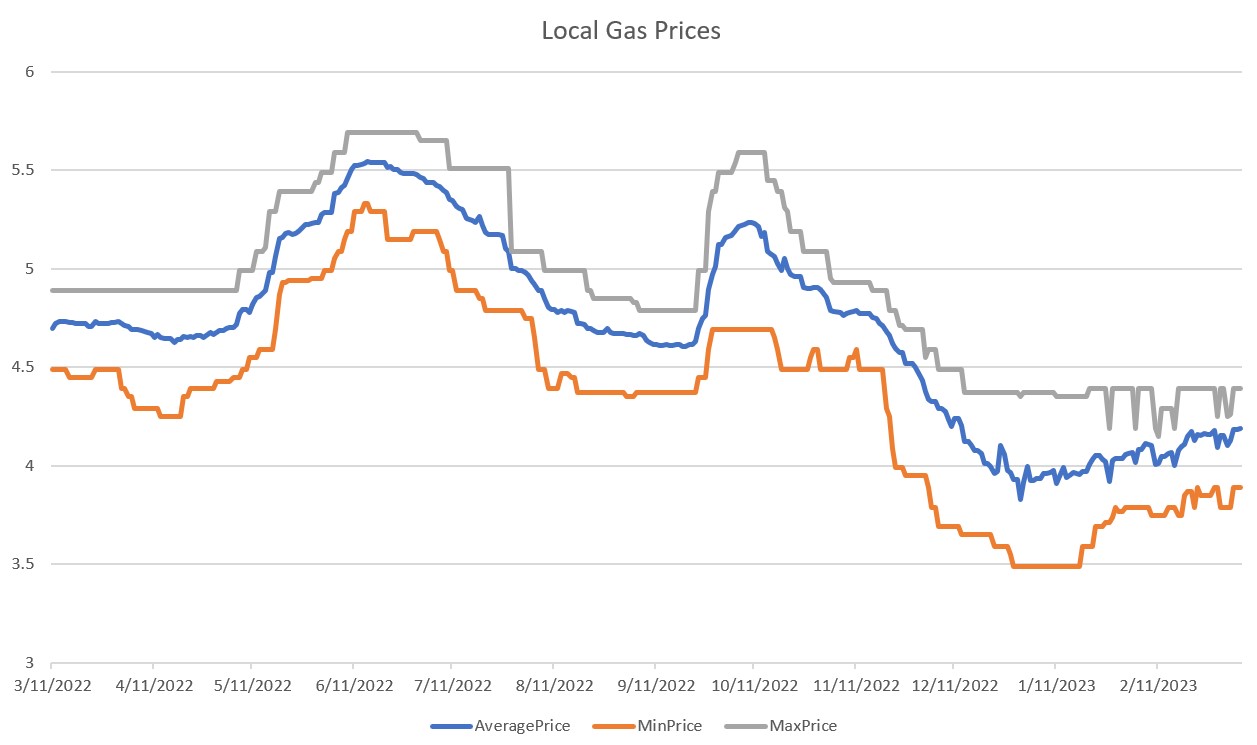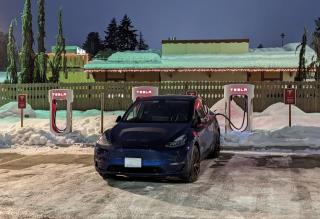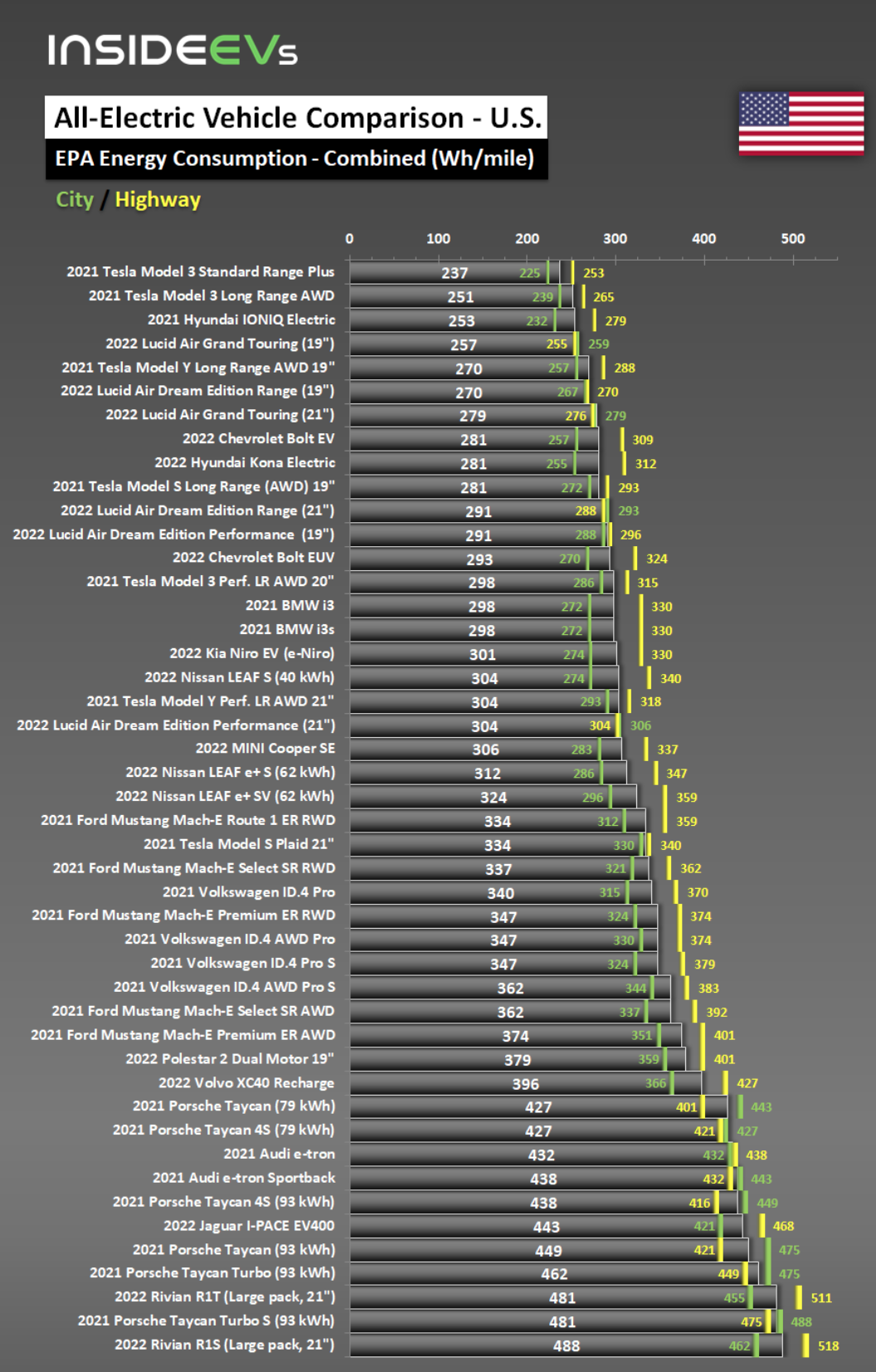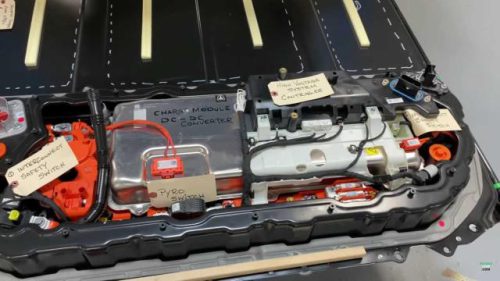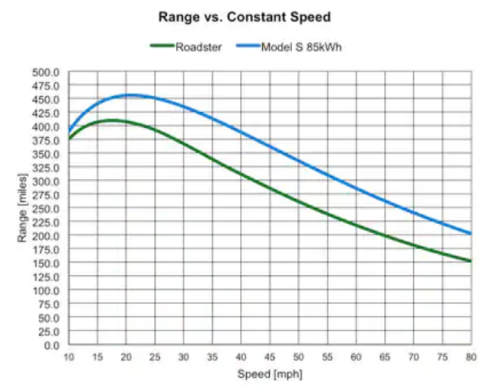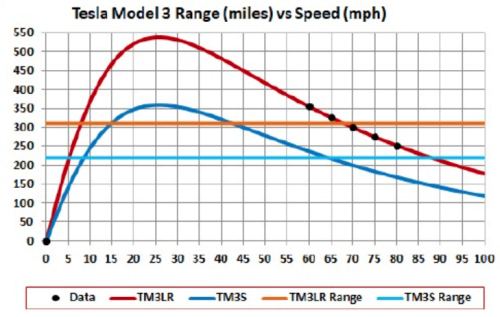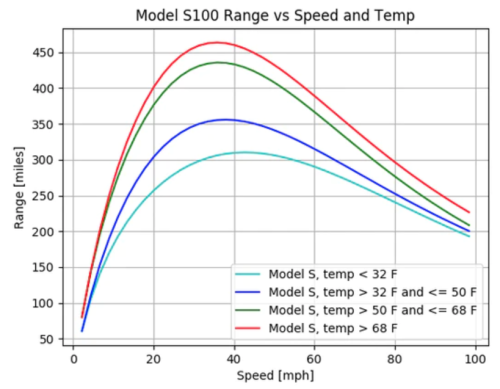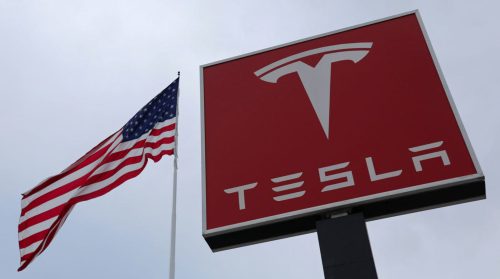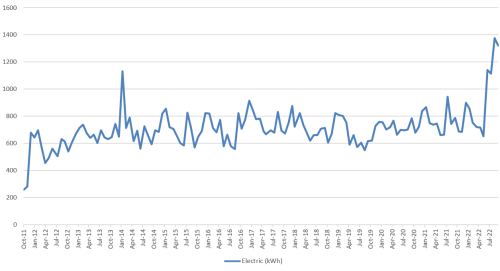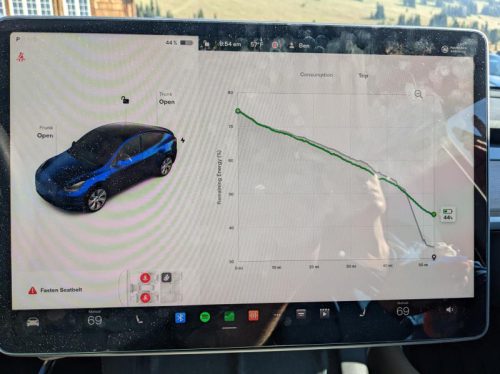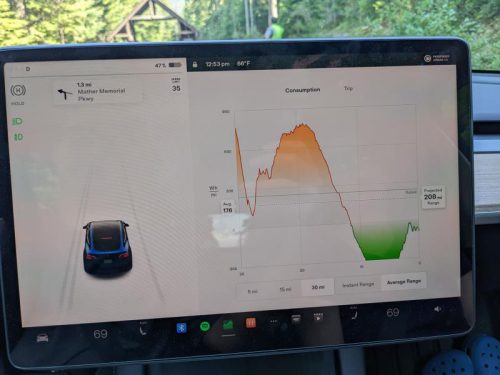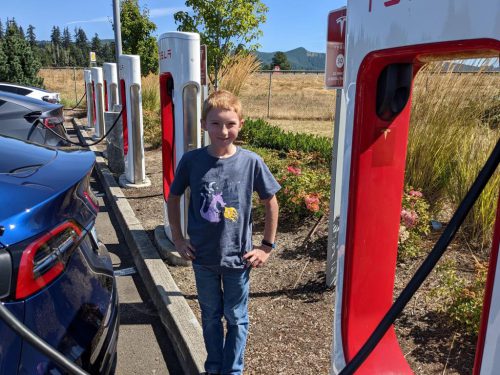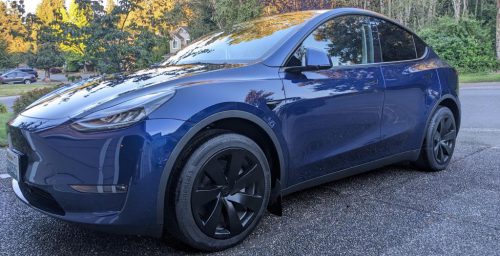Welcome to another Tesla Tuesday!
We recently took our first overnight road trip with our Model Y. We’ve gotten very used to daily driving/charging routines and never worry about running out of battery, but what would happen on a longer trip where we had at least one mandatory charging stop and a few nights away from home?
Our destination was about three hundred miles away, and while the Model Y has an estimated 330 miles of range, just like gas cars, you’re unlikely to hit that in real life. Plus, that would mean charging to 100% (not great for the battery) and discharging to almost 0% (not great for the battery and then how would we get back home?) So there would be at least one stop for charging along the way.
Another factor to consider was that our destination was far off the beaten path. The closest slow Level 2 charger (fairly slow, similar to what we have at home) was about 30 minutes away and the closest supercharger was more like 45 minutes away. Couple that with some mountain driving and I estimated that we needed to leave the last supercharger with about 50% battery to make sure we could get there and back.
The online Tesla road trip planner isn’t that useful if you’re not going to have destination charging because it doesn’t let you specify how much charge you want to have left when you arrive or get insight into all your options for planning the route. I prefer to use abetterrouteplanner.com. On that site, I could tell it my real-world watts per hour average (265), how much charge I’d leave home with (90%) and how much I wanted to arrive with (40%). Then there are even more options for whether you’d like fewer (but longer) stops or more (but faster) stops. The Tesla batteries charge the fastest from about 15-40% so if you’re really optimizing for ~5 minute charging stops, it’s best to stay in that range, but obviously that means more stops along the way, so you have to balance it all out.
My family needs to stop for a lot of bathroom breaks. I plan one every 60-90 minutes and sometimes we’ll get lucky and stretch it out to 2 hours. On this trip, I planned one required charging stop that was right next to a Panera around lunch time. Then I had a couple optional stops before and after that where we could get some electrons while using the bathroom.
On the way down, we ended up doing that lunch stop and then one more stop at the last supercharger before heading off into the mountains. The charging worked out fine, my estimates were good, and we arrived with more battery than planned because our bathroom/food stops were slower than the chargers. In fact, when we stopped for lunch, I had to go out and move the car because it was done charging before our food was done being made!
There ended up being a 110v plug that was right next to where we parked, and while that’s a slow way to charge, we were there for a few days so it didn’t matter. I plugged the car in on the day before we left, and we rolled out with 85% charge. On the way back, we made just a single stop for charging and food. Since I charged up pretty far and it gets slower as you go, that one took longer (29 minutes to go from 28% to 84%) But by the time we got our food and used the bathroom, we only waited about an extra 10 minutes and it saved us from making any more stops. We needed a bit of extra juice on that charge because after we got home, we had to head straight to school for a meeting and a trip to/from school is about 14% of the battery.
When planning the road trip, I had been thinking about how much money we would save versus driving the truck. I get about 20.5mpg on a road trip in the truck and with gas averaging around $4.80 that would have been $140 in gas. I estimated that the same trip in the Tesla would be about $15 in electricity. That was a mistake because I forgot that superchargers are more expensive than charging at home. So overall, it was more like $40 in electricity. That’s still a big savings and the savings are even greater if you factor in maintenance costs.
The truck has so much room that it’s super easy to pack and easy to move around to get comfortable. We were nervous about having enough room in the car since we’re used to packing in the truck, but when we hit the road, we had tons of extra space. The frunk and the under-trunk storage suck up so much stuff! Even with a big cooler in the trunk, we were at about two-thirds capacity.
Having autopilot on the long drive was nice. I could go for long stretches of road without constantly monitoring my speed or making minor corrections to stay in my lane. Traffic was heavy the whole way so it was annoying to come off the autopilot (lane-keeping) feature every time I wanted to change lanes, but in the back of my mind, I knew I could have paid money to avoid that so it wasn’t too bad.
I spent a lot more time planning our route than I would have with the truck, but now that we’ve got the first big road trip under our belts, I think future ones will be easier. It’s nice to know that the car is also watching our battery and if we ever did something dumb, it would scream at us and direct us to a charger. I think long road trips in the truck will be more annoying now without the benefit of Autopilot. It’s amazing how much less fatigued I felt after a long drive just from not having to spend the energy to stay in my lane. It doesn’t seem like much but it really adds up over the hours. And since the battery lasts a lot longer than our bladders, the charging stops weren’t much of a factor other than having to plan to stop at certain places.
I call this experiment a win and look forward to more road trips with our Model Y!
